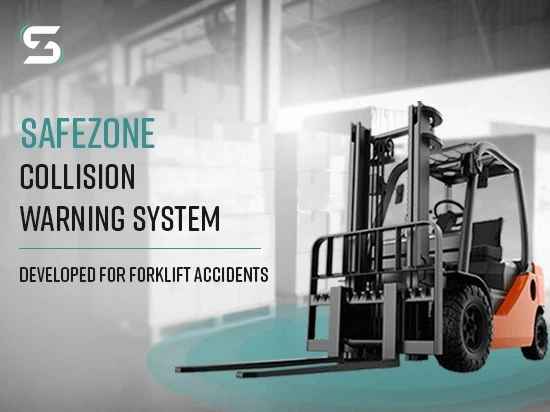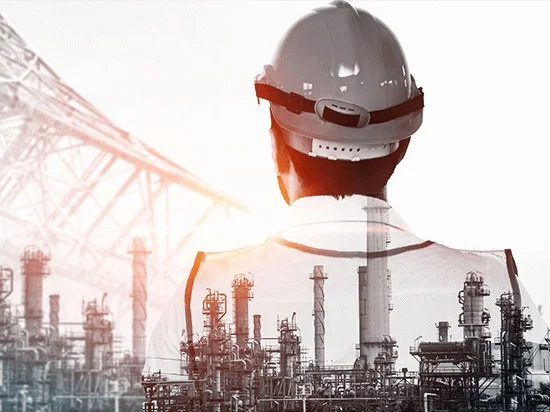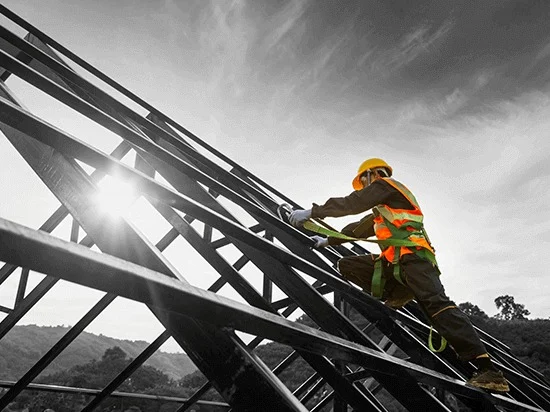Forklift Telemetry for Fleet Management
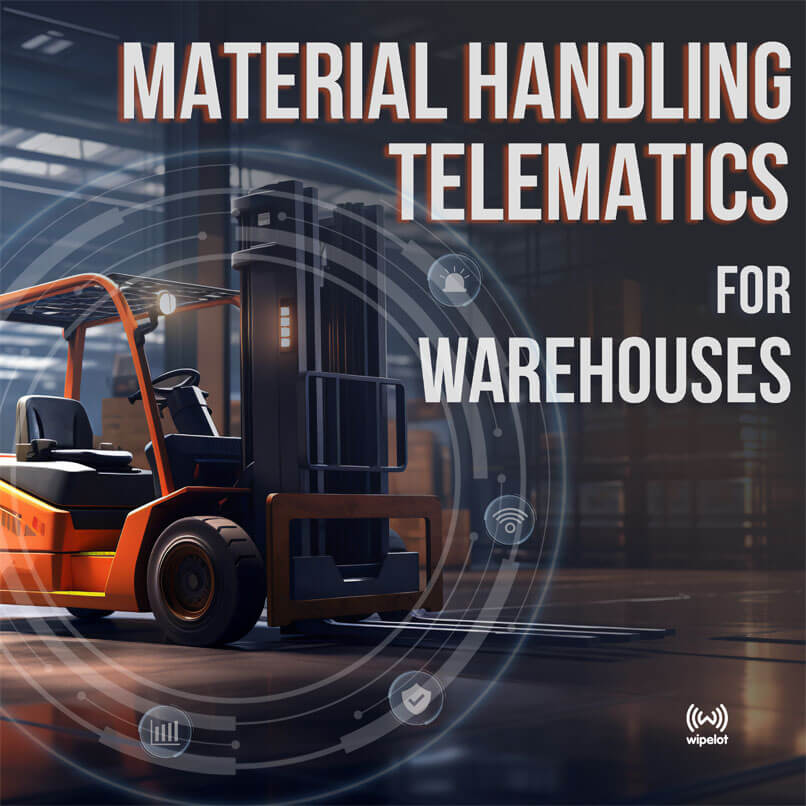
Telemetry systems are powerful tools for analyzing and enhancing the efficiency of vehicle fleets in large industries like warehousing, manufacturing, mining, and construction. Internal hardware and configurable software enable remote monitoring of equipment, analysis of technical data, and development of process optimizations.
What is a Forklift Telemetry System?
A forklift telemetry system is a suite of fleet management and analysis tools that monitors and analyzes the performance, location, usage, and operator behaviors of forklifts or material handling fleets. This technology uses software, hardware, sensors, and various positioning and communication technologies (such as GPS, UWB, and Wi-Fi) to track forklift operations in real-time and record all generated data. The primary goal of the system is to enhance operational efficiency by analyzing data collected from field vehicles, predict and plan maintenance needs, improve workplace safety by creating safer working environments, and reduce costs.
Forklift Fleet Management: Essentials and Impact
The forklift fleet management systems are an impressive technological combination that integrates hardware placement, GPS or indoor tracking with UWB, and advanced data processing capabilities. This integration creates a system that monitors forklift operations comprehensively and in real time.
Authorized Personnel Access
Forklift telemetry systems incorporate security measures that allow only authorized personnel to operate forklifts. Access for each operator is controlled through personal identification methods, such as RFID tags or other authentication systems. This feature enhances workplace safety by preventing unauthorized access and misuse of the forklifts.
Operator Behavior Analysis
Telematics systems monitor and analyze operator driving behaviors. Risky behaviors, such as speed violations in specific areas, are detected and reported. This information helps improve operator training and safety standards while promoting safe driving habits.
Collision Warning System
The collision warning system (Safezone) is designed to reduce the risk of collisions between forklifts or forklifts and pedestrians. When the system detects an imminent hazard, it alerts the driver with audible and visual warnings and, if necessary, automatically reduces or stops the forklift's speed, significantly enhancing work safety.
E-Checklist
The E-Checklist allows operators to digitally check the condition of the forklift at the start of each shift or specified intervals. These digital checklists include critical components such as mechanical parts, tire pressure, and braking systems and immediately report any deficiencies or malfunctions. This provides a transparent monitoring and reporting process for operators and maintenance teams.
Impact Detection
The impact detection system identifies severe collisions or impact events involving forklifts. It activates various safety scenarios based on the severity of the impact. Impact data is also used for maintenance planning and accident analysis.
Accurate and Real-Time Location Tracking
Real-time location tracking continuously monitors the positions of forklifts within warehouses or industrial areas. This feature enables more efficient management of operations and allows forklifts to follow optimal routes. It also indicates areas of high forklift concentration, contributing to improved operational processes.
Vehicle Usage Analysis
Vehicle usage analysis provides information about forklift operation time, idle time, and efficiency. This feature helps businesses optimize their fleets by tracking how and how often forklifts are used, maximizing vehicle utilization.
Maintenance and Service
The maintenance and service feature continuously monitors the maintenance needs of forklifts and sends automatic alerts when these needs arise. This system facilitates the tracking of scheduled maintenance intervals, extends equipment life, and minimizes downtime.
Data Analysis and Reporting
The system collects and analyzes large amounts of data related to forklift operations. This data provides businesses with comprehensive insights for evaluating operational performance, reducing costs, and improving business processes. Reports support decision-making across various areas, from daily operations to long-term strategic planning.
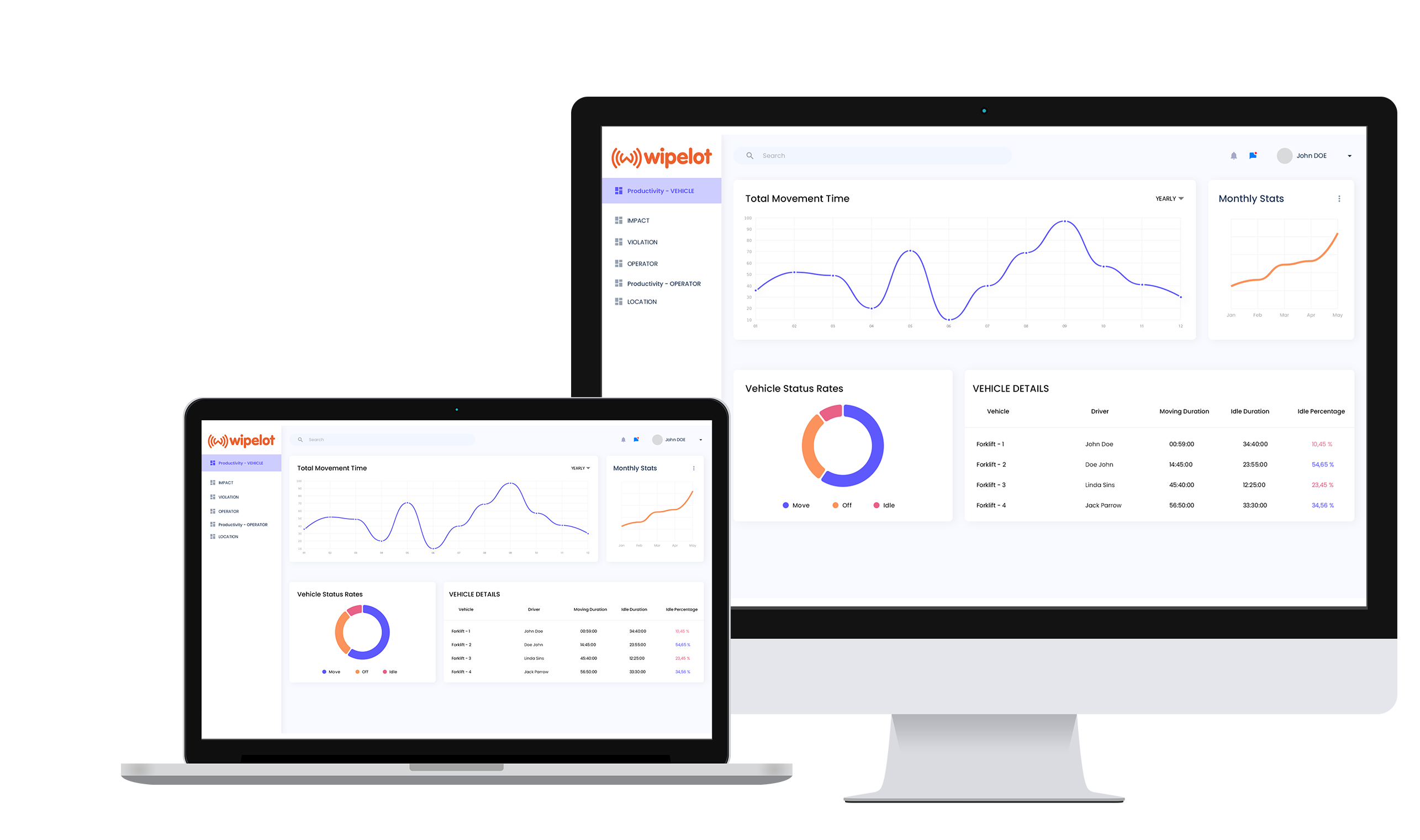
FAQ - Forklift Telemetry and Fleet Tracking with RTLS
What is a forklift telemetry system and how does it improve fleet management?
A forklift telemetry system is a combination of software and hardware that monitors forklift usage, operator behavior, and location data in real time. It improves fleet management by optimizing equipment utilization, reducing idle time, and enhancing safety through data-driven insights.
How does forklift telemetry help reduce operational costs?
By monitoring vehicle performance, operator behavior, and maintenance needs, forklift telemetry systems help reduce equipment downtime, prevent accidents, and optimize fleet usage. This leads to significant reductions in maintenance expenses and fuel consumption.
Can forklift telemetry systems increase warehouse safety?
Yes, they enhance safety by ensuring only authorized personnel operate forklifts, monitoring risky behaviors, detecting collisions, and issuing warnings to prevent accidents. Systems like Wipelot’s Safezone also reduce pedestrian-forklift incidents.
What kind of data does a forklift telemetry system collect?
Telemetry systems collect data on vehicle location, speed, impact events, idle vs. active time, operator access, and maintenance alerts. This data supports analytics for improving efficiency and making strategic fleet decisions.
How does Wipelot's telemetry system support predictive maintenance?
Wipelot's telemetry system monitors usage patterns and wear indicators to send alerts for upcoming maintenance needs. This helps prevent unplanned downtime, extends vehicle life, and improves overall fleet reliability.
The Role of Telematic Systems in Warehouse Management
Forklift telematics systems optimize warehouse management efficiency by streamlining workflows and increasing productivity. These systems reduce travel time and increase throughput by determining the most efficient routes, minimizing idle time by monitoring forklift usage, extending equipment lifespan by recording collisions and providing early maintenance alerts. Additionally, they use telematics data to identify and address inefficiencies in operational processes, offering managers concrete insights for strategic planning and resource allocation. By adopting these systems, businesses can enhance forklift fleet performance, reduce maintenance and operational costs, and significantly improve the overall efficiency and profitability of warehouse operations.
Wipelot enhances business processes with its innovative telematics solutions for warehouse operations and forklift management. Wipelot's Lotus RTLS software provides optimized workflow within the warehouse by tracking the real-time locations of forklifts and other equipment. This software monitors forklift movements, analyzes routes, and manages warehouse traffic to minimize collision risks. Furthermore, Flow Analytics software thoroughly analyzes collected data to identify and resolve bottlenecks and inefficiencies in operational processes. Wipelot's advanced technology solutions optimize forklift fleet usage, reduce maintenance and operating costs, and improve overall warehouse efficiency. By choosing Wipelot's telematics systems, businesses strengthen their strategic decision-making with real-time data analysis and advanced reporting tools, gaining a competitive advantage.
For more information about our forklift telematics solutions, please contact us.
